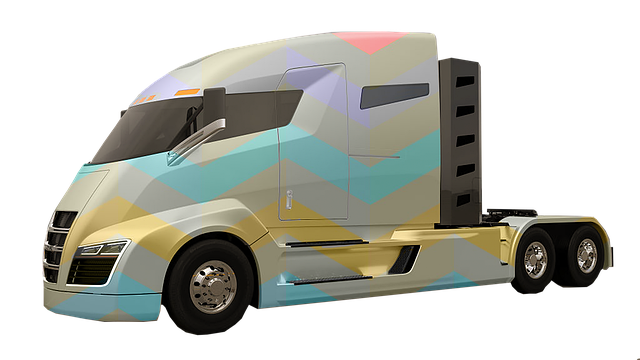Looking to register your car in California? This comprehensive guide walks you through the entire process, from understanding key requirements to selecting the right registration type. We’ll highlight the importance of VIN verification, detailing the necessary documents needed for a smooth and efficient registration. By the end, you’ll be equipped with the knowledge to navigate this essential administrative task.
- Understand California Car Registration Requirements
- Gather Necessary Documents for VIN Verification
- Perform Vehicle Identification Number (VIN) Check
- Select an Appropriate Registration Type
- Submit Application and Pay Fees
Understand California Car Registration Requirements

Before diving into the registration process, it’s crucial to understand California’s car registration requirements. These regulations are designed to ensure road safety and maintain accurate vehicle records. One key aspect is the verification of a vehicle’s Vehicle Identification Number (VIN). In California, this process typically involves a VIN inspection, which checks the vehicle’s history, including any reported accidents or outstanding issues.
A mobile VIN verification or mobile vin verifier service can simplify this step by allowing you to conduct the inspection from the comfort of your home or even while at a car dealership. This modern approach ensures that your car meets all legal standards before registration, making the overall process smoother and more efficient for both you and the California Department of Motor Vehicles (DMV).
Gather Necessary Documents for VIN Verification

Before registering your car in California, you’ll need to gather essential documents for VIN (Vehicle Identification Number) verification. This process ensures that your vehicle meets all legal standards and is ready for California’s roads. Key documents include the title of ownership, registration certificate from the previous state (if applicable), proof of insurance, and a valid driver’s license. Additionally, you’ll require a completed California Vehicle Registration Application form.
For a seamless VIN verification process, consider using a mobile vin verifier or scheduling a mobile vin inspection. These services offer convenience by coming to your location, ensuring a stress-free experience. A mobile vin inspector can quickly cross-reference your vehicle’s details with the manufacturer’s records, making it easier for you to complete the registration.
Perform Vehicle Identification Number (VIN) Check

Before you register your car in California, it’s crucial to perform a Vehicle Identification Number (VIN) check. This process involves verifying the vehicle’s history and ensuring it’s not stolen or involved in any fraud. You can do this through various methods, including a mobile vin inspection or visiting a designated location for a vin verification.
A mobile vin inspection offers convenience by allowing you to get the check done at your preferred location. Alternatively, a vin inspection at an official center is also an option. Either way, having a clear and accurate VIN history is essential to streamline the registration process in California. Remember that a valid and reliable VIN inspection is a significant step towards ensuring a smooth car registration experience.
Select an Appropriate Registration Type

When selecting an appropriate registration type for your car in California, it’s crucial to understand the different options available. The choice largely depends on whether you’re a resident or non-resident, as well as the purpose of your vehicle. For residents, online registration through the DMV’s website is usually the fastest and most convenient method. If you’ve recently purchased a vehicle from an out-of-state dealer, you may need to undergo a vin inspection or vin verification process to ensure all documentation is in order before completing the registration.
For non-residents or those with specialized vehicles, there are alternative options. For instance, if you’re a collector car owner, you might qualify for a historical vehicle registration, which has different requirements and benefits. Similarly, if your vehicle is used for commercial purposes, such as delivering goods or transporting passengers, special permits may be necessary. Always consult the California DMV guide to select the most suitable registration type for your situation, and consider options like mobile vin verification services to make the process even smoother.
Submit Application and Pay Fees

To complete the registration process, you’ll need to submit an Application for Title and Registration (Form DV-140) along with the required fees. This step is crucial as it involves verifying your vehicle’s identity through a comprehensive VIN verification process. Ensure all information provided is accurate and up-to-date.
The fees vary depending on several factors, including the type of vehicle and the registration period. You can pay these fees online or at a California Department of Motor Vehicles (DMV) field office. After successful submission, keep in mind that a mobile VIN inspection or a mobile vin verifier might be required for certain vehicles to ensure compliance with state regulations, so it’s advisable to check with your local DMV for any additional steps.
Registering a car in California involves understanding key requirements, gathering essential documents for VIN verification, conducting a vehicle identification number (VIN) check, selecting the right registration type, and submitting applications with associated fees. By diligently navigating these steps, you’ll ensure your vehicle complies with state regulations, facilitating a smooth process that keeps you and your vehicle legal on California roads. Remember, accurate VIN verification is crucial for a successful registration.
